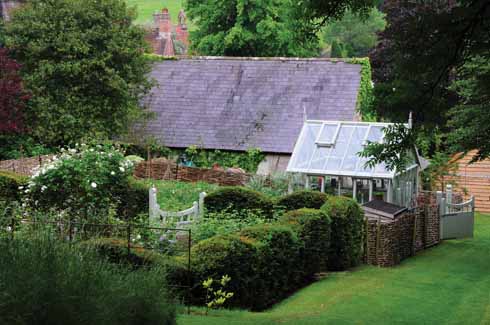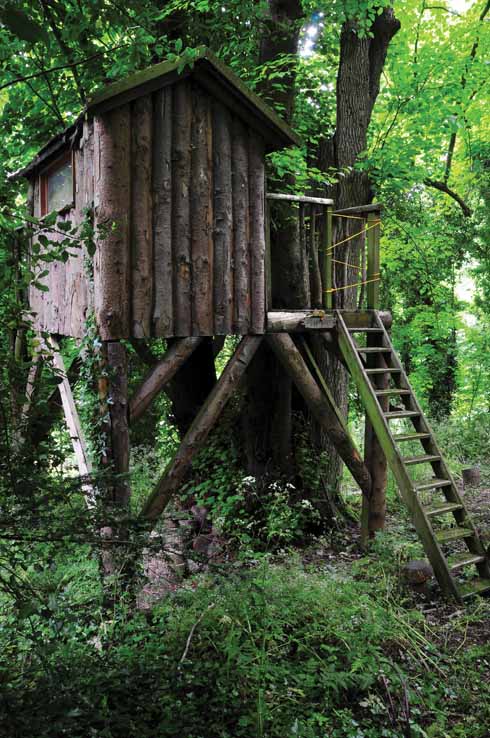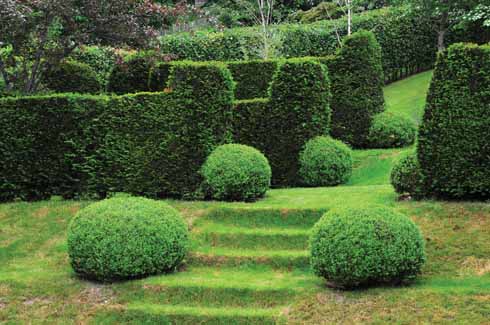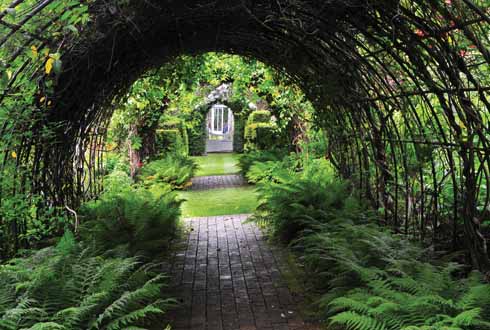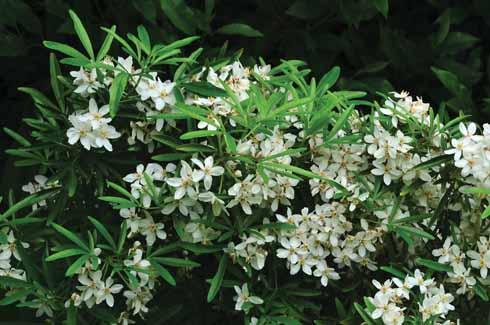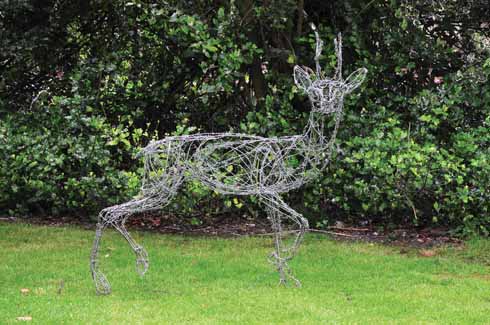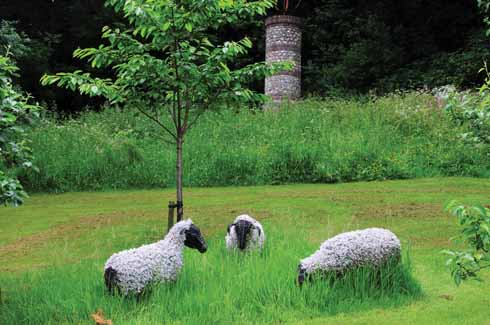A Dorset garden: The Old Rectory, Winterborne Stickland
Susy and Colin Vandell visit an exquisite hideaway a decade in the making
Published in May ’17
The Old Rectory at Winterborne Stickland (meaning steep land) lies in a valley a few miles south-west of Blandford, at the head of the Winterborne chalk stream. Does a beautiful garden have to be meticulously planned? It seems not, as this two-acre garden, which surrounds a 17th-century brick-and-flint-banded rectory, proves otherwise. The garden has grown organically according to the owners. Garden ‘rooms’ have gradually developed as ideas have germinated and grown, based on structure rather than big herbaceous perennial beds with arrangements of plants and shrubs. The site is sloping and has a backdrop of mature trees, an ancient large-leaved lime tree in particular.
The garden rooms include a beautifully presented vegetable plot, a swimming pool garden room, a formal garden around the house, a rose garden and an orchard with some interesting livestock. The garden is a paradise for children: paths lead to different areas for playing in, but most especially the rather superb tree house.
Kate, the creator of the masterpiece, had no prior knowledge of gardening in England, having only come to this country this century. She started the project in 2007 and even though it is relatively young, the garden now looks mature and as if it has been there forever; it certainly enhances the wonderful old rectory. Kate has enjoyed experimenting with different structures and shapes – indeed this is the main focus of the garden – with hedges and paths leading from one area to the next in an effortless amble. She has enjoyed the challenge of working with colour, contrast and symmetry. The paths and hedges bear testament to this idea. It is a garden which is at its best in the spring, and then again later on in the year.

Clockwise, from left: The tubular flowers of foxgloves invite invertebrates to visit; Thalictrum, otherwise known as Chinese meadow rue; campanula flowers are irresistible to insect pollinators
The small, lawned area in front of the house is enhanced with a superb standing stone emulating the mystic site of Avebury. It certainly provides a focal point as well as a spiritual place to stop and marvel. The climbing rose on the north-facing wall of the house, Rosa ‘Sympathie’, repeat flowers throughout the summer and provides a contrast to the soft, mellow flint-and-brick wall against which it is planted.
Passing the raised herb bed, one reaches the swimming pool garden room. This area is surrounded by a yew hedge to create the feeling of a distinct area, or room. An avenue of trees leads away from this room at the top of the incline to another area, creating a layered effect, with the mature trees at the back creating a backcloth. The grass steps, an idea evocative of the grass staircase at Milton Abbey, lead out of the pool area into the formal hawthorn avenue, which then drifts into the wild wood area of the garden, graduating gently from formal to informal in an inconspicuous transition.
The incline is interrupted by another pathway attracting the visitor’s eye. There are views either way, leading the eye to interesting destinations. One leads along a yew-lined hedge with a honeysuckle arch climbing over the top and an urn in the distance, while the other leads one to a bench under a rose arch through a gap in the beech hedge. Could this be one of the many gin and tonic spots carefully positioned around the garden? Somewhere to sit and enjoy an enchanting view on idyllic summer evenings?
Round the back of the house is a terrace with a seating area, which is adjacent to a carefully maintained lawn with surrounding flower beds. Here you will see some of the more usual inhabitants of gardens: low straight box hedges encasing daisies, alliums, roses and geraniums with various thalyctrums (self-seeded and transplanted), as well as orange blossom and phlox at the far end of the lawn. Towards the woodland path persicaria, euphorbia, hellebores and acers vie for your attention as well as a superb barbed wire roebuck created by sculptor Jo Burchell.
In the room adjacent to the formal lawn area and pool room there is an assortment of interesting shrubs grown for their contrasting colours and textures, including various evergreen pittosporums, beautiful fragrant choisyas with delicate white flowers, and a Portugal laurel with its glossy green leaves. Copper beech hedging along with a smoke bush contrasts vividly against the other green-leaved shrubs.
While enjoying your visit, look out for some amusing and interesting creations around the plot: metal balls inspired by Chelsea, guinea fowl, a folly, bead sheep from South Africa, an oak and rope milepost with destinations and distances to London, South Africa and Mallorca helpfully marked. An enchanting feature of the garden is the surprise that is encountered around each corner, for it is impossible to see what the next room holds until you actually visit it. The horticultural experiment with contrasts, structures, shapes, colours and symmetry is definitely a success, which is a delight to go and visit.
- On the weekend of 10 & 11 June 2017, the Old Rectory is open under the National Gardens Scheme from 2.00 to 5.00. Admission is £5 (children free). For more information, visit www.ngs.org.uk/gardens/find-a-garden/Garden.aspx?id=33035
